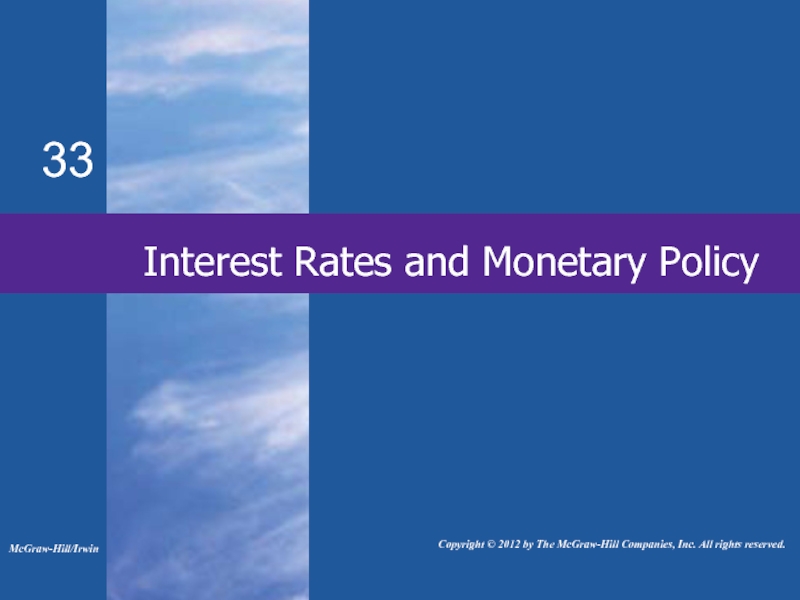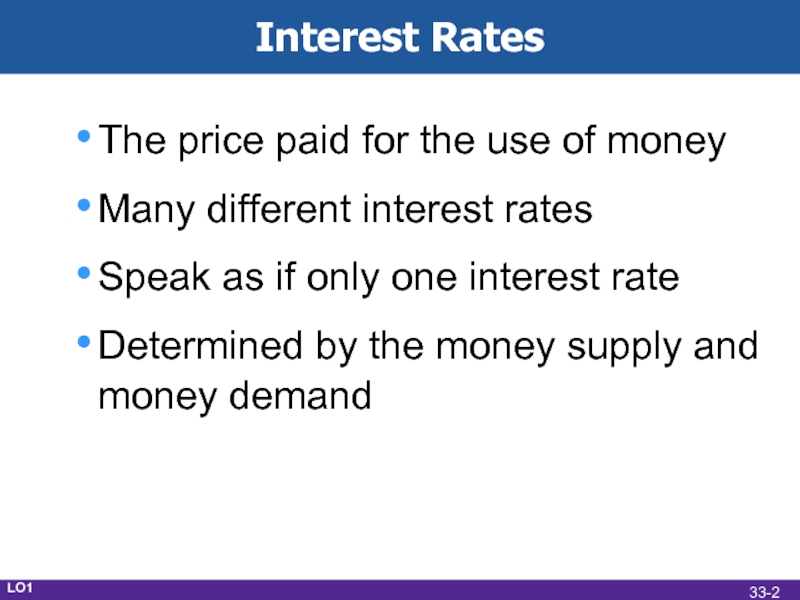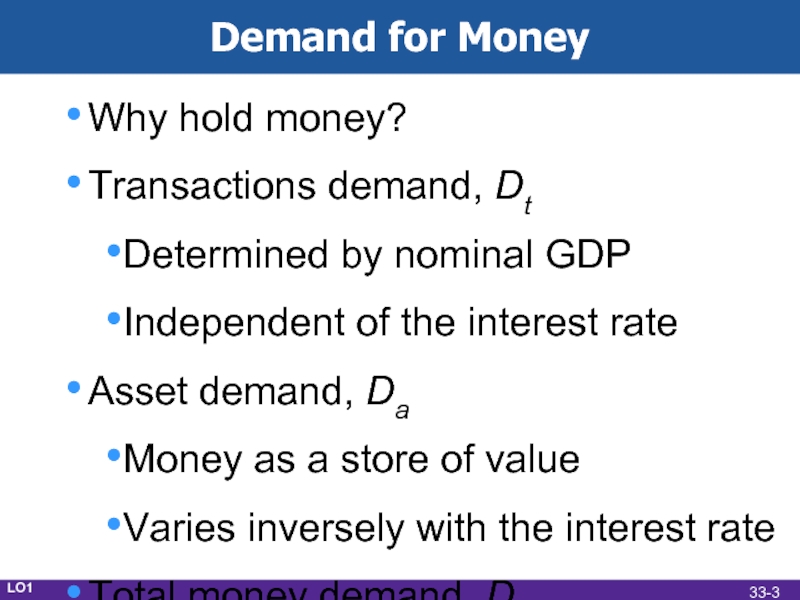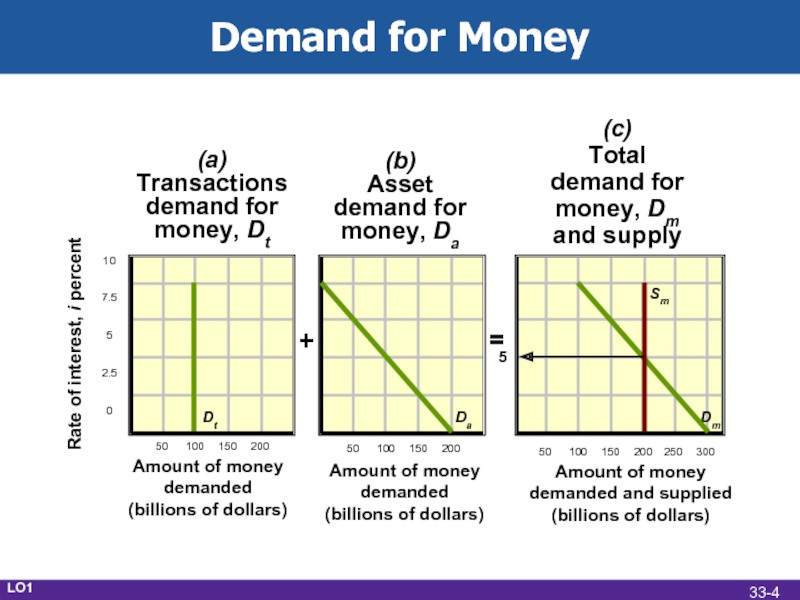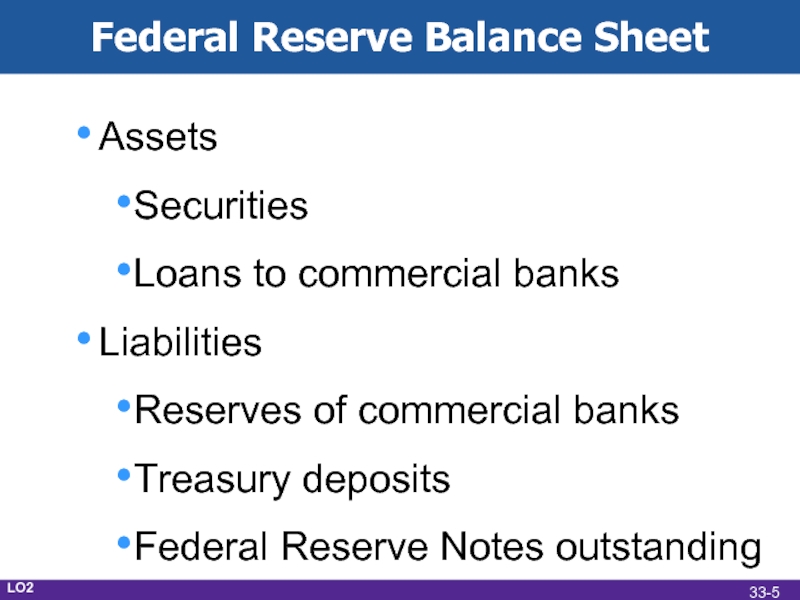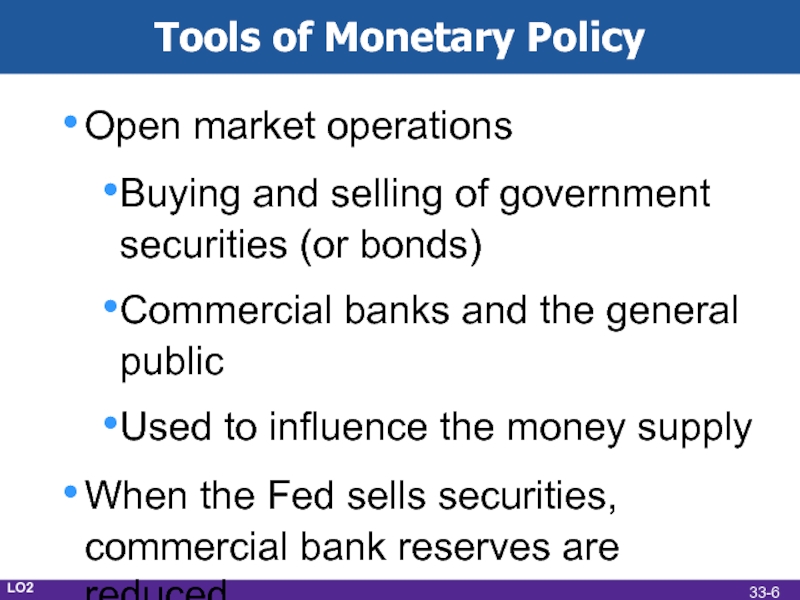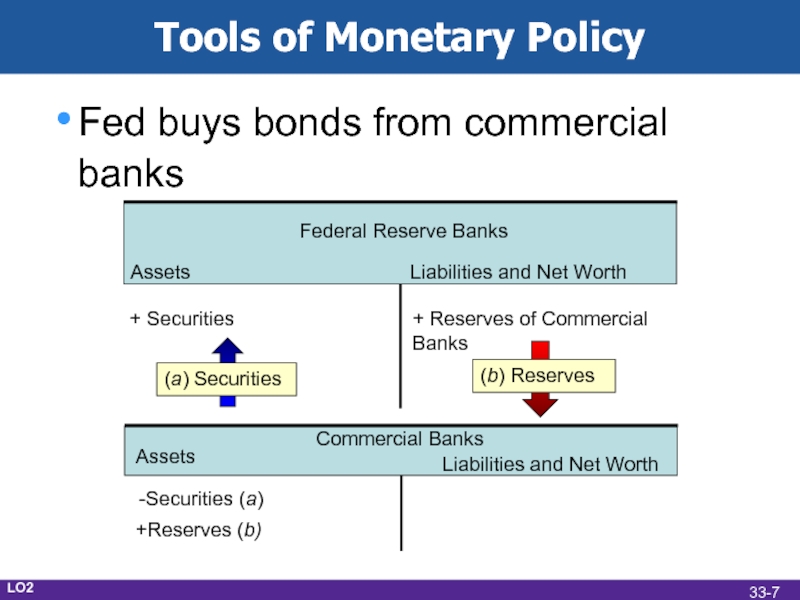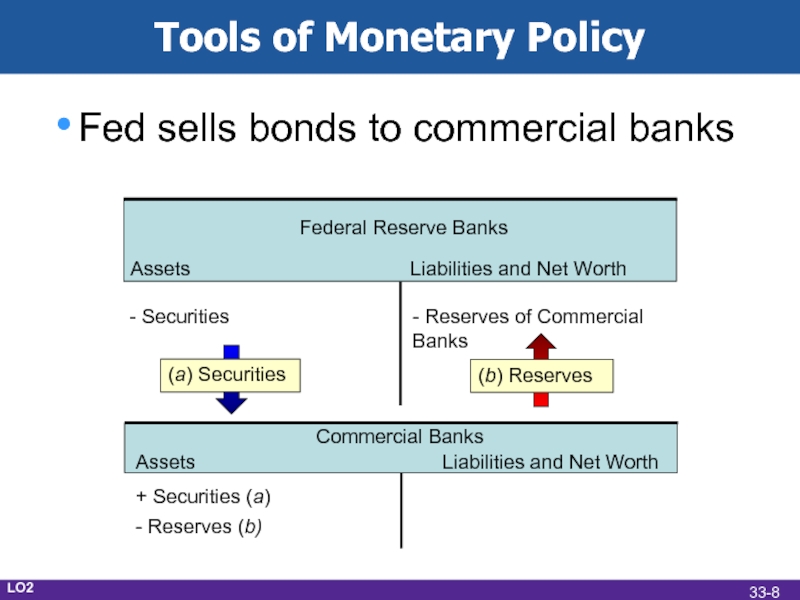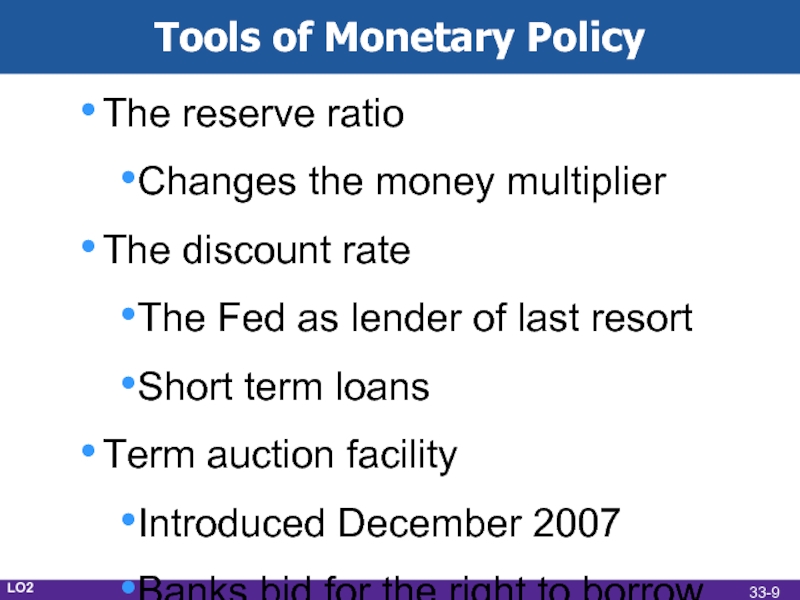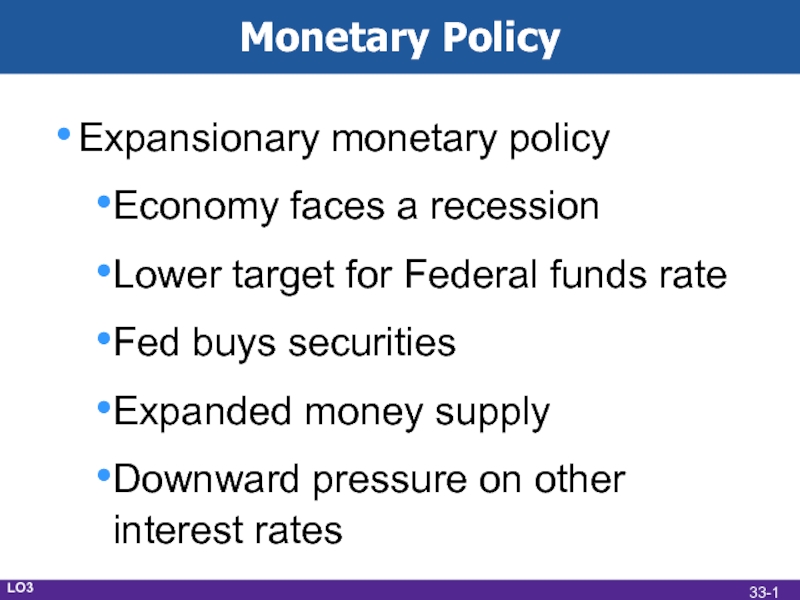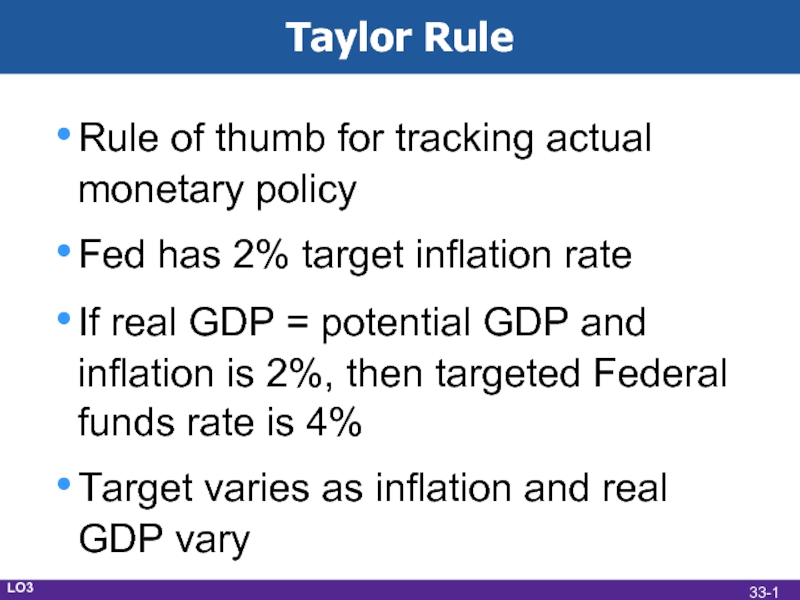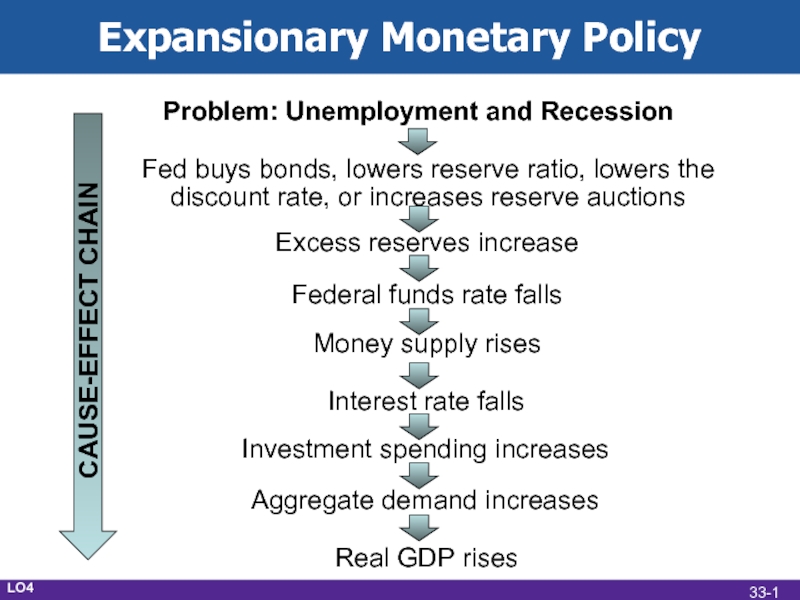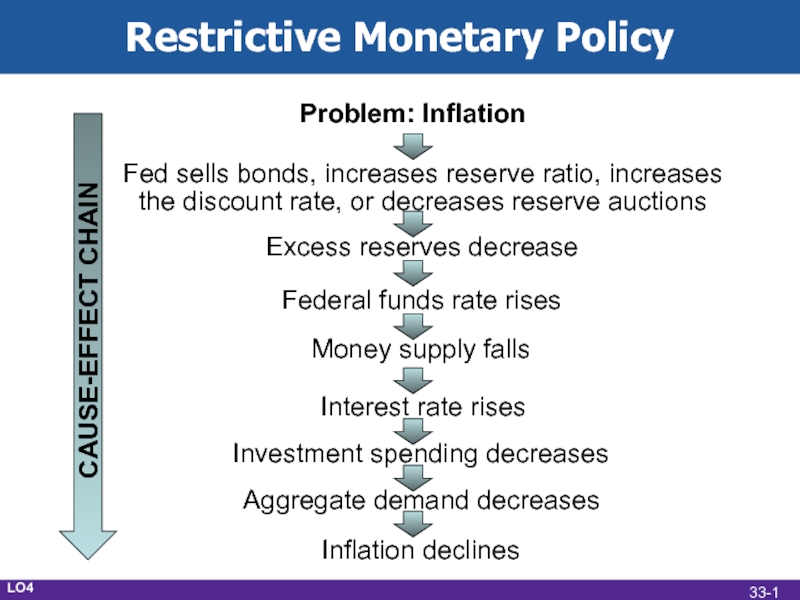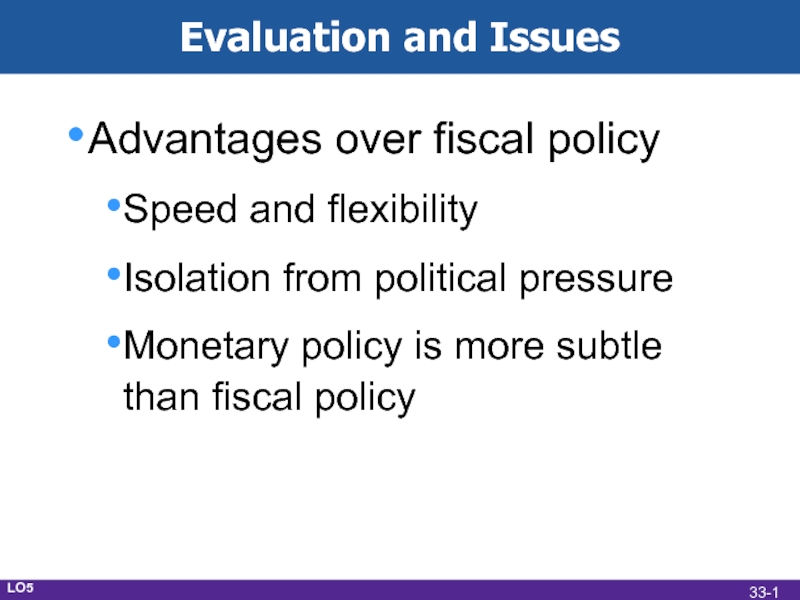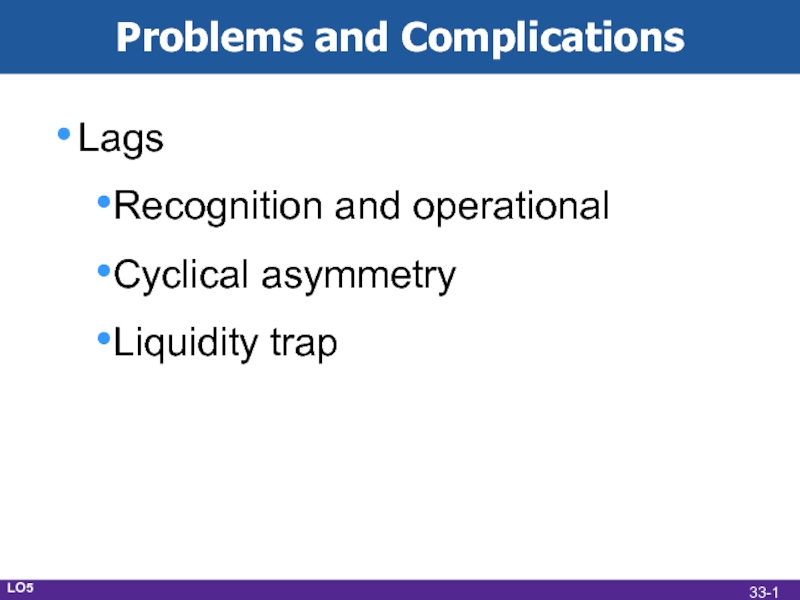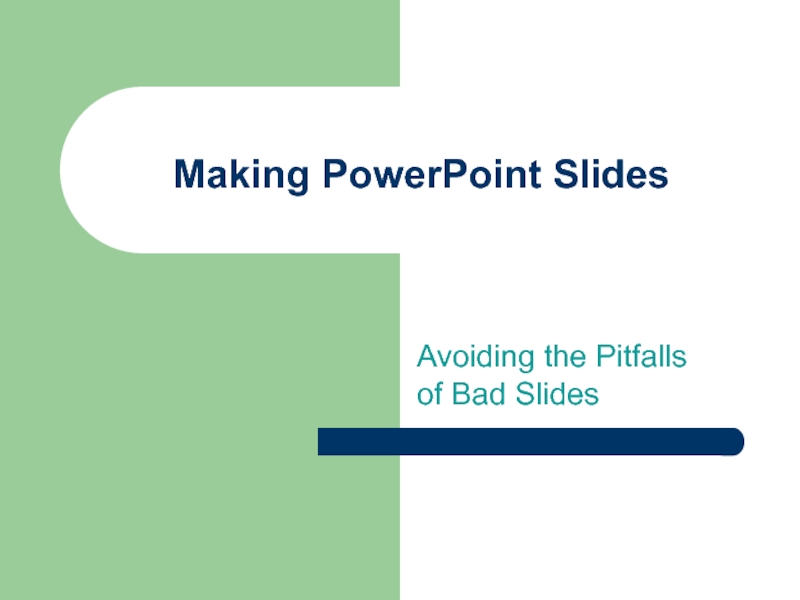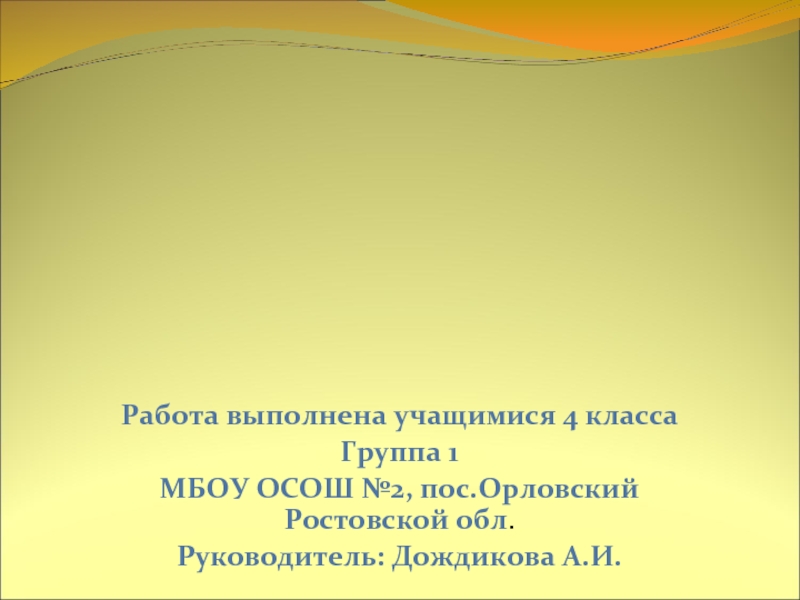Разделы презентаций
- Разное
- Английский язык
- Астрономия
- Алгебра
- Биология
- География
- Геометрия
- Детские презентации
- Информатика
- История
- Литература
- Математика
- Медицина
- Менеджмент
- Музыка
- МХК
- Немецкий язык
- ОБЖ
- Обществознание
- Окружающий мир
- Педагогика
- Русский язык
- Технология
- Физика
- Философия
- Химия
- Шаблоны, картинки для презентаций
- Экология
- Экономика
- Юриспруденция
Interest Rates and Monetary Policy
Содержание
- 1. Interest Rates and Monetary Policy
- 2. Interest RatesThe price paid for the use
- 3. Demand for MoneyWhy hold money?Transactions demand, DtDetermined
- 4. Demand for MoneyRate of interest, i percent107.552.50Amount
- 5. AssetsSecuritiesLoans to commercial banksLiabilitiesReserves of commercial banksTreasury depositsFederal Reserve Notes outstandingLO2Federal Reserve Balance Sheet33-
- 6. Tools of Monetary PolicyOpen market operationsBuying and
- 7. Tools of Monetary PolicyFed buys bonds from
- 8. Tools of Monetary PolicyFed sells bonds to
- 9. Tools of Monetary PolicyThe reserve ratioChanges the
- 10. Tools of Monetary PolicyOpen market operations are
- 11. The Federal Funds RateRate charged by banks
- 12. Monetary PolicyExpansionary monetary policyEconomy faces a recessionLower
- 13. Monetary PolicyRestrictive monetary policyPeriods of rising inflationIncreases Federal funds rateIncreases money supplyIncreases other interest ratesLO333-
- 14. Taylor RuleRule of thumb for tracking actual
- 15. Expansionary Monetary PolicyProblem: Unemployment and RecessionFed buys
- 16. Restrictive Monetary PolicyProblem: InflationFed sells bonds, increases
- 17. Evaluation and IssuesAdvantages over fiscal policySpeed and
- 18. Problems and ComplicationsLagsRecognition and operationalCyclical asymmetryLiquidity trapLO533-
- 19. Скачать презентанцию
Слайды и текст этой презентации
Слайд 1Interest Rates and Monetary Policy
McGraw-Hill/Irwin
Copyright ©
2012 by The McGraw-Hill Companies, Inc. All rights reserved.
Слайд 2Interest Rates
The price paid for the use of money
Many different
interest rates
Speak as if only one interest rate
Determined by the
money supply and money demandLO1
33-
Слайд 3Demand for Money
Why hold money?
Transactions demand, Dt
Determined by nominal GDP
Independent
of the interest rate
Asset demand, Da
Money as a store of
valueVaries inversely with the interest rate
Total money demand, Dm
LO1
33-
Слайд 4Demand for Money
Rate of interest, i percent
10
7.5
5
2.5
0
Amount of money
demanded
(billions of
dollars)
Amount of money
demanded
(billions of dollars)
Amount of money
demanded and supplied
(billions of
dollars)=
+
(a)
Transactions
demand for
money, Dt
(b)
Asset
demand for
money, Da
(c)
Total
demand for
money, Dm
and supply
Dt
Da
Dm
Sm
5
LO1
33-
Слайд 5Assets
Securities
Loans to commercial banks
Liabilities
Reserves of commercial banks
Treasury deposits
Federal Reserve Notes
outstanding
LO2
Federal Reserve Balance Sheet
33-
Слайд 6Tools of Monetary Policy
Open market operations
Buying and selling of government
securities (or bonds)
Commercial banks and the general public
Used to influence
the money supplyWhen the Fed sells securities, commercial bank reserves are reduced
LO2
33-
Слайд 7Tools of Monetary Policy
Fed buys bonds from commercial banks
Federal Reserve
Banks
+ Securities
+ Reserves of Commercial Banks
(b) Reserves
Commercial Banks
Securities (a)
+Reserves (b)
Assets
Liabilities
and Net WorthLO2
(a) Securities
33-
Слайд 8Tools of Monetary Policy
Fed sells bonds to commercial banks
Federal Reserve
Banks
- Securities
- Reserves of Commercial Banks
Commercial Banks
+ Securities (a)
- Reserves
(b)Assets
Liabilities and Net Worth
(a) Securities
(b) Reserves
LO2
33-
Слайд 9Tools of Monetary Policy
The reserve ratio
Changes the money multiplier
The discount
rate
The Fed as lender of last resort
Short term loans
Term auction
facilityIntroduced December 2007
Banks bid for the right to borrow reserves
LO2
33-
Слайд 10Tools of Monetary Policy
Open market operations are the most important
Reserve
ratio last changed in 1992
Discount rate was a passive tool
Term
auction facility is newGuaranteed amount lent by the Fed
Anonymous
LO2
33-
Слайд 11The Federal Funds Rate
Rate charged by banks on overnight loans
Targeted
by the Federal Reserve
FOMC conducts open market operations to achieve
the targetDemand curve for Federal funds
Supply curve for Federal funds
LO3
33-
Слайд 12Monetary Policy
Expansionary monetary policy
Economy faces a recession
Lower target for Federal
funds rate
Fed buys securities
Expanded money supply
Downward pressure on other
interest ratesLO3
33-
Слайд 13Monetary Policy
Restrictive monetary policy
Periods of rising inflation
Increases Federal funds rate
Increases
money supply
Increases other interest rates
LO3
33-
Слайд 14Taylor Rule
Rule of thumb for tracking actual monetary policy
Fed has
2% target inflation rate
If real GDP = potential GDP and
inflation is 2%, then targeted Federal funds rate is 4%Target varies as inflation and real GDP vary
LO3
33-
Слайд 15Expansionary Monetary Policy
Problem: Unemployment and Recession
Fed buys bonds, lowers reserve
ratio, lowers the discount rate, or increases reserve auctions
Excess reserves
increaseFederal funds rate falls
Money supply rises
Interest rate falls
Investment spending increases
Aggregate demand increases
Real GDP rises
LO4
CAUSE-EFFECT CHAIN
33-
Слайд 16Restrictive Monetary Policy
Problem: Inflation
Fed sells bonds, increases reserve ratio, increases
the discount rate, or decreases reserve auctions
Excess reserves decrease
Federal funds
rate risesMoney supply falls
Interest rate rises
Investment spending decreases
Aggregate demand decreases
Inflation declines
CAUSE-EFFECT CHAIN
LO4
33-
